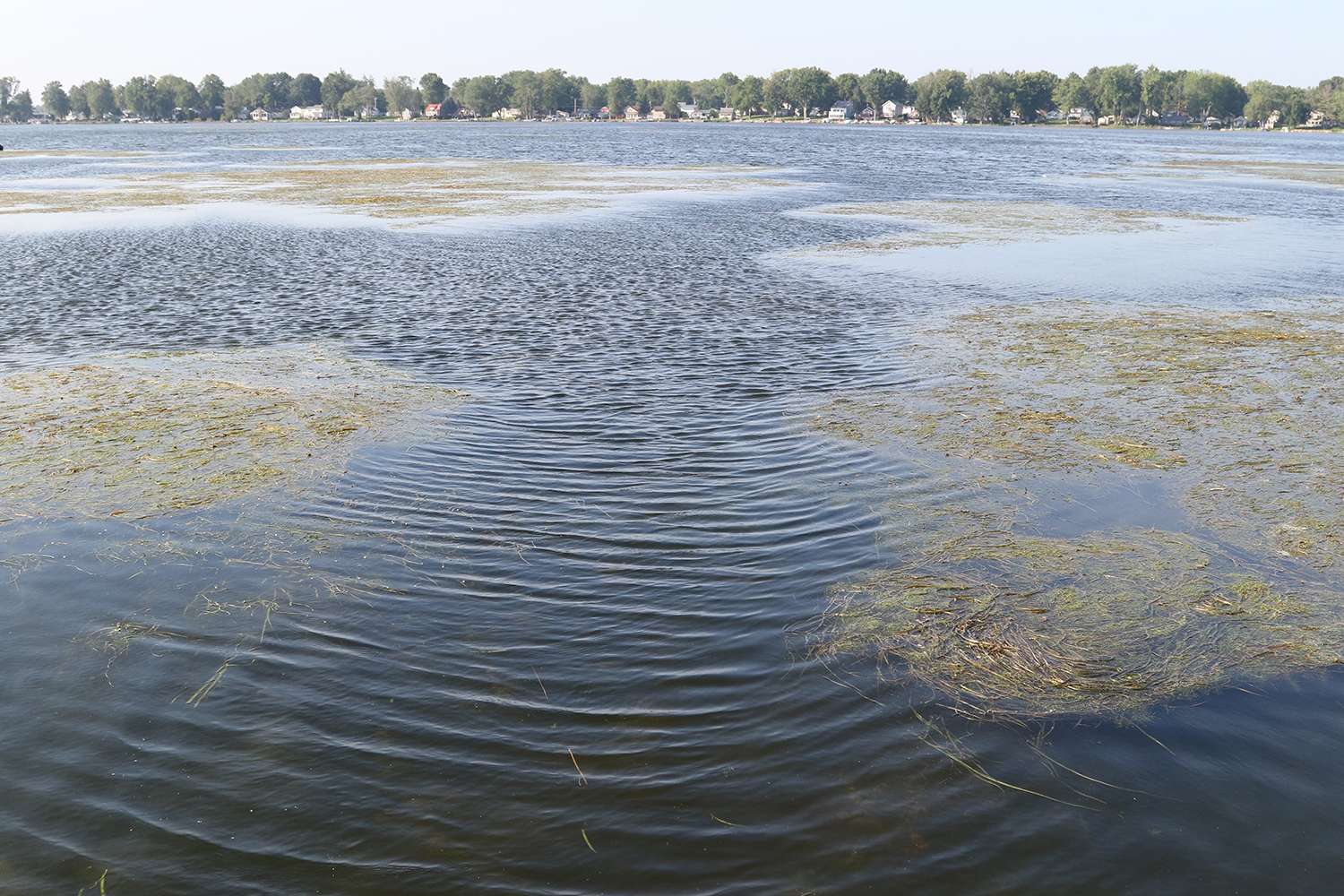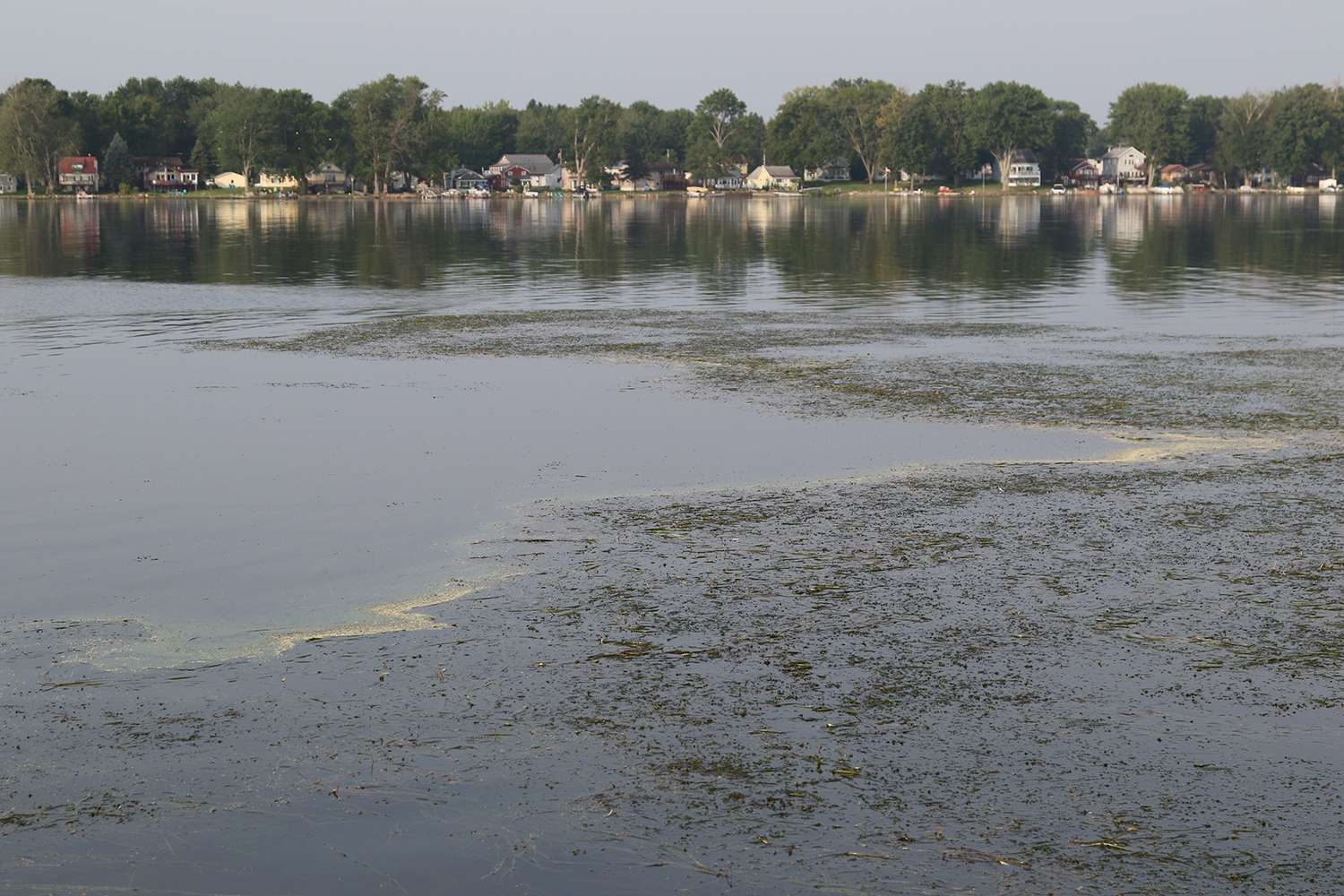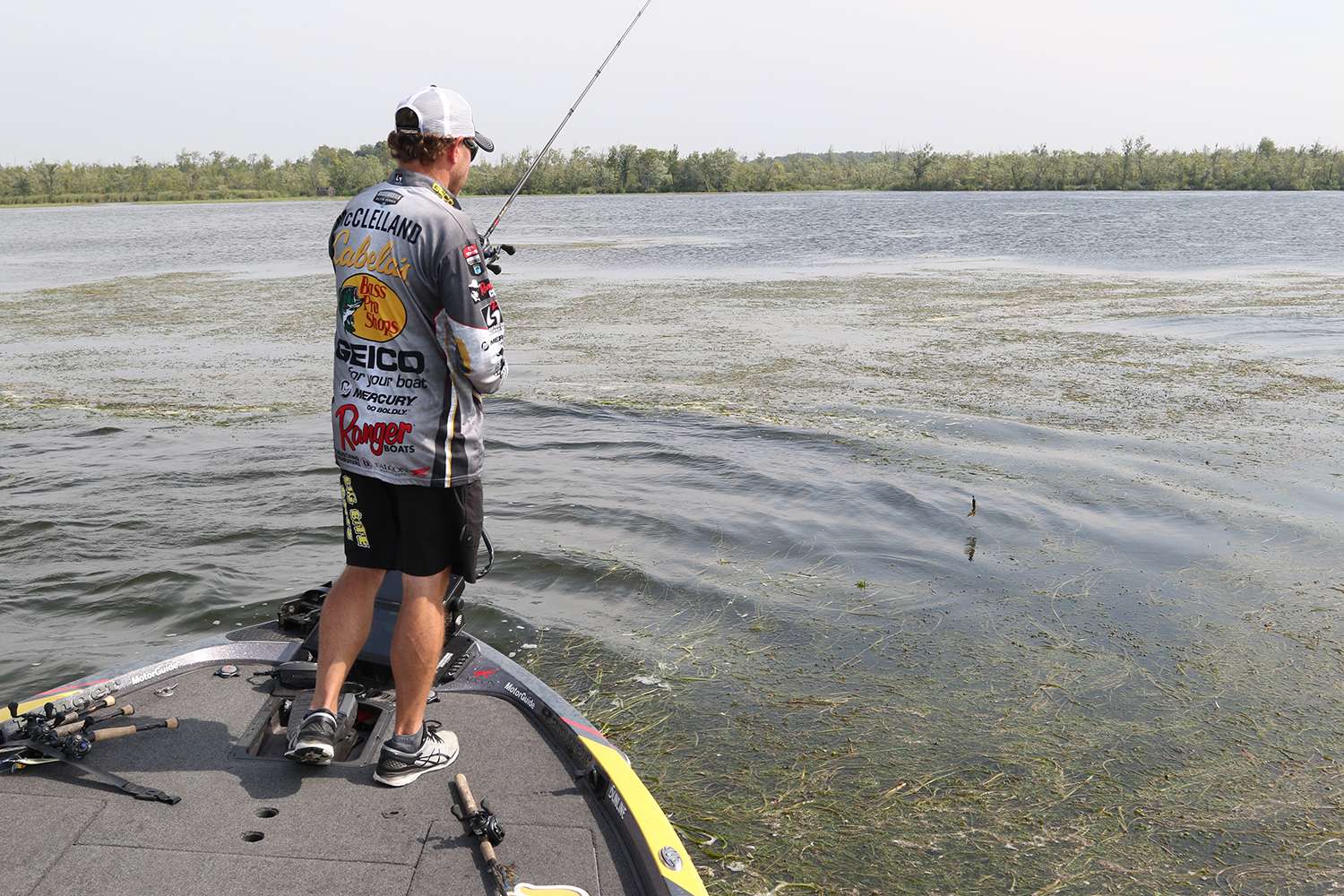
Elite pro Matt Herren has logged many hours and thousands of casts into, over and around shallow, emergent grass beds. From the cheap seats, it might all appear rather vanilla, but his philosophy defines why
“When you have miles and miles of grass, it’s overwhelming,” Elite pro Matt Herren admits. “While there might be fish in there, you really won’t be able to break it down and thoroughly fish it unless you find something defined.”
One of Herren’s favorite grass scenarios is a fragmented perimeter. Unlike long contiguous edges, lots of detached segments take on an identity of their own — something akin to another common bass habitat.
“In the fall, those fish get out into what I call ‘clumps,’” Herren said. “It kind of looks like stumps and those fish like to travel through there and really key on baitfish as they move through there.
“I like looking for the active fish first. That’s why I start with the edges; a lot of times, it’s a lot faster to catch them that way. That’s why I like to fish it with a buzzbait with a (buzz toad trailer).”
The oddities
Now, along those edges, you’ll often find other cues that can point you in the right direction. For pro Mike McClelland, analyzing a sprawling field of emergent grass starts with visually locating the most prominent points, pockets and irregularities. These spots, he says, are the natural feeding locations for bass eager to pick of passing prey — or a well-placed Spro McStick jerkbait.
Think about it: If you’re trying to scare your wife like I did once — once — you don’t stand against a long, flat wall, you tuck around the corner. When she redirects her course, it’s “Boo!” time. Or, in my case, “sore nose” time. But let’s just move on.
So, after McClelland hits all these high percentage spots within the section he’s attacking, he’ll then move inward, where his objective is the balance between cover and access for his Big Bite Baits Tour Flipper Tube.
“I don’t want to be fishing the most massive, matted-up stuff there is; I want to find the more isolated areas, the scattered clumps, the isolated clumps,” he said. “You always have those contours, ditches and bottom inconsistencies that change the growth pattern of the grass.
“I’m always paying attention to my contours and trying to follow the edges of the breaks and ditch lines and creek channels.”

Wind wisdom
You can’t pick the weather, but McClelland knows how to leverage nature’s fan.
“I very seldom like to fish with the wind at my back,” he notes. “I’m always throwing across the wind, or if the wind’s not too hard, I want to be throwing into the wind and moving my bait with the current created by the wind.”
On windy days, the lighter and more malleable edges of a grass bed may bear wind-blown indentions, often lined with pollen (spring), summer algae or frothy scum lines. The visual elements clearly define the upwind edge, which is, at times, where you want to fish.
“I’ve seen a lot of time when the wind is blowing moderately that they do seem to get on the upwind side,” McClelland said. “As the wind really starts to rip, that’s when they I’ve seen those fish pull around. I’ve seen them move 60 to 100 yards off the tip of a shoal to the back side.
“It’s definitely a matter of how hard the wind blows. Water color becomes an issue too. If the water dirties up and blows across the shoal, it can have the reverse effect on fish. They want to push the front edge of the mud line, rather than be on the back side of it where it really muddies up.”
Also, pay attention to the lanes and cuts running between prominent sections of a grass bed, as wind-blown current passing through these channels creates big-time feeding opportunity for bass smart enough to put their business end right against the parade route. Depending on your angle — possibly fishing from the back deck, while your partner guides the show — you may need to “play” the wind to get a topwater frog to land in a spot that allows you to make a proper presentation.
Sometimes, that means making a forceful shot right down the throat, while other scenarios may find it best to cast across a smaller section of grass to hit the edge of a wind lane and then wait for the boat to come around the point to essentially line up an effective retrieve down that windward edge.
Bottom line: Do whatever you have to do to bring a bait into a natural approach for savvy bass that are, no doubt, capitalizing on the delivery service.

All in the angles
Herren’s a firm believer in fan casting grass mats with frogs. A bite’s a bite, but it’s also the potential precursor for subsequent success. The key to unlocking the treasure chest is accuracy with diversity.
“You’ll notice that there’ll be one particular cast that they’ll set up on and that will kind of give you an idea of which way they’re looking and which way they’re expecting their forage to come from,” Herren said. “Then you can rotate around that particular cast and bring it to that area at different angles.”
McClelland stresses another key angle consideration: “I generally try to put my shadow where I’m not throwing. I don’t want to have that sun coming over me and the boat and putting my shadow in the direction of my cast.”
The hole truth
You’ll find two types of openings in a grass bed: blow-up holes made by fish attacking natural forage or lures and growth gaps where rock, stumps, even a sandy patches have blocked the grass expansion. The former tells of recent feeding and because bass — particularly the big ones — tend to stick to certain areas of a grass bed, there’s a favorable chance that a presentation right through the red zone will bring someone charging forth with bad intentions.
The often larger growth gaps also indicate promising areas, which bass use as windows to the world.
“Those fish like to sit inside the grass and look out at the clean water; they love to ambush prey like that,” Herren said. “So, anytime you have sandy spots where you have a clean hole, really pay attention. A lot of times, you have to present a bait across the hole to get them to fire out on it, but other times, they’re sitting in the edges of the hole.”
Here, persistence can be your biggest asset, such as dissecting the hole from multiple angles often brings your bait into the kill zone.





